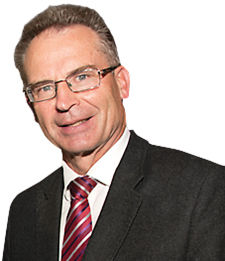“The minister’s response does not evince any concern about the distressing and disproportionate impact of the government’s effective cut to health services on poorer members of our community,” says JON STANHOPE in reaffirming the government’s long-term neglect of the ACT health budget.
IN March last year, my colleague Dr Khalid Ahmed and I published an article in “The Canberra Times” in which we revealed that the ACT government had not, since 2012-13, made allowance in the health budget for increased demand driven by population growth, the ageing of the population, changes in technology or health inflation generally.

We further revealed that, as a consequence, the health budget was, in real terms, being cut by about one per cent each year. The impact on health funding in the ACT of a cut in funding of that order has a compounding effect and translates, on average, to a cut in each year since 2013 of a minimum of $100 million.
Following the publication of that article the shadow Health Minister in the Legislative Assembly, Vicki Dunne, asked the then Health Minister Meegan Fitzharris, on April 5, the following question, on notice:
“Are the calculations correct in the article in ‘The Canberra Times’ by Khalid Ahmed and Jon Stanhope on 30 March 2019 that health funding in the ACT is going backward by one per cent a year after taking into account population growth, the ageing population and improvements in technology; if not (a) why? And (b) to what extent are they incorrect?
“Is health funding in the ACT keeping pace with population growth, the ageing population and improvements in technology, wages costs and other costs: if not, what is the extent of the shortfall?
Minister Fitzharris responded to the question, in writing, on May 10, as follows:
“Treasury have advised it is difficult to re-engineer the analysis quoted in the article in order to assess the claims made. Nominal growth rates in health funding of 10 per cent per year are not sustainable. For the ACT to maintain nominal growth in health funding at 10 per cent would require lower levels of investment in other services to the ACT community.”
The answer is, with respect, obtuse, misleading and incorrect.
There was no need at all, in order to answer the question, for Treasury to re-engineer the analysis in the article which Dr Ahmed and I wrote. The Government Finance Statistics produced by the Australian Bureau of Statistics (ABS) provide a detailed annual statement of expenditure in every area and category of service delivery by each government in Australia including, of course, health services. The reports are compiled from information and data provided to the ABS by each government and in the case of the ACT, traditionally by the Treasury.
All Treasury had to do was to refer to the expenditure data that it had provided to the ABS, as we mentioned in our article, we had done.
For growth in health demand, Treasury only had to refer, as we did, to the data provided by ACT Health to the Productivity Commission. For information on population growth and inflation the Treasury only had to turn to the source it has always accessed for such information, namely the ABS.
In response to the question of whether funding health on the basis Dr Ahmed and I have argued for is feasible and sustainable, all that was required was to access and read the Budget papers for the years in which health was in fact funded on that very basis, namely the five years up to 2011-12.
For example, on page 23 of the 2006-07 Budget Paper No 3 the following information is provided under the heading “Health Services”:
“Health is being provided with an expenditure envelope and growth path that is realistic, affordable and sustainable. Funding levels have been based upon an assessment of sub-sector projections of demand and health inflation. The growth rates incorporated in the funding envelope are:
- Acute Care Services – 8 per cent per annum;
- Mental Health – 6 per cent per annum;
- Cancer Services – 8 per cent per annum;
- Community Health – 2.5 per cent per annum;
- Population Health – 3 per cent per annum;
- Health and Community Care Program – 9 per cent per annum.”
The relevant ABS reports confirm that from 2006-07 until 2011-12 health was funded to meet demand and at the rates we mentioned in our article. Furthermore those rates were clearly not, as claimed by the minister, at a level that was “unsustainable” evidenced by the fact that 2011-12 was the last year the ACT recorded a surplus.
The minister’s response does, unwittingly, confirm our main concern which is that in recent years the ACT health budget makes no provision for growth in demand. That was precisely our point and we continue to insist that the crisis enveloping the public health system in Canberra, involving as it does the rigid rationing of public health services, is directly attributable to that failing.
What the minister’s response does not do is evince any concern about the distressing and disproportionate impact of the government’s effective cut to health services on poorer members of our community including pensioners, the working poor, Aboriginal and Torres Strait Islander people and people otherwise from low-income households, who cannot afford private health insurance, and are entirely dependent on the public system.
Who can be trusted?
In a world of spin and confusion, there’s never been a more important time to support independent journalism in Canberra.
If you trust our work online and want to enforce the power of independent voices, I invite you to make a small contribution.
Every dollar of support is invested back into our journalism to help keep citynews.com.au strong and free.
Thank you,
Ian Meikle, editor




Leave a Reply